Computers
Intel Founded
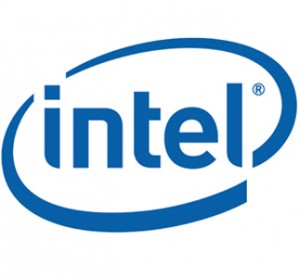
Robert Noyce, Andy Grove, and Gordon Moore incorporate Intel in Santa Clara, California to build microprocessors. Their first processor, the 4004, was released in 1971 for use in calculators. IBM’s choice of Intel’s 8088 processor for use in the IBM PC led to Intel’s emergence as the premier manufacturer of processors still to this day.
Control Data Corporation Founded

Control Data Corporation, an early pioneer in the field of supercomputers, is incorporated. CDC’s most notable employee was Seymour Cray, who during the 1960’s developed for CDC the fastest computers in the world at the time. However, in 1972 Seymour Cray left CDC to form his own company, Cray Research, which then took the title of creating the world’s fastest computers.
Simple as 1-2-3: IBM Buys Lotus
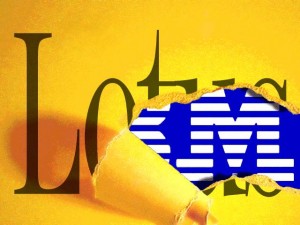
IBM completes a $3.5 billion buyout of Lotus Development, the producer of the once-dominant Lotus 1-2-3 spreadsheet software and the then-popular Lotus Notes groupware. IBM had hoped to leverage Lotus 1-2-3 to challenge the increasingly demanded Microsoft Excel software, but alas, there was little slowing down the Microsoft juggernaut during the 1990’s. Lotus 1-2-3 steadily lost marketshare, and IBM finally announced the end of support for the software in 2013.
Lotus Notes groupware faired little better than 1-2-3, succumbing to Microsoft Exchange as the dominant groupware platform among large companies, but it remained entrenched among certain corporations for many years under the name IBM notes. In 2018 IBM sold Notes along with other software products to HCL Software for $1.8 Billion. HCL still develops and supports Notes to this day with a focus on security and lower cost as a way to compete with Microsoft Exchange.
Keyboards and Computers, Together at Last!
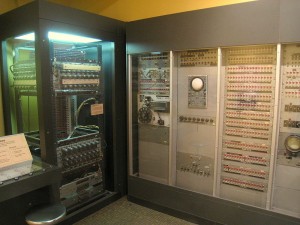
MIT’s Whirlwind, which had been completed five years earlier, becomes the first computer in the world to allow its users to enter commands through a keyboard. Previously, all input was accomplished through dials, switches, and/or punch cards.
The First Mass-Produced Computer
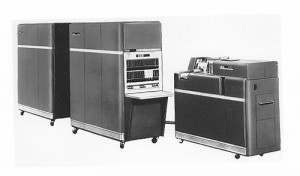
IBM announced its 650 series of computers, the first mass-produced computer, and the dominant computer of the decade. The IBM 650 stored information on a rotating magnetic drum and received it on programmed punch cards. Its memory stored numbers with up to 10 decimal digits.
The Transition to Transistors Begins
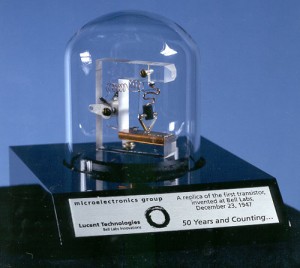
Originally designed to create improvements to electromechanical relays and vacuum tubes in telephone switching equipment, Bell Labs holds a press conference in New York to publicly demonstrate the first point-contact transistor. The transistor represents a significant advance in technology. As it is developed over the next few years, it will become the successor to the vacuum tube, the primary method of controlling electronic circuitry at the time. The use of transistors allows the development of the integrated circuit and microchips which kickstarted the rapid advance of electronic and computerized technology over the last 70+ years. Every industry that utilizes technology, from communications to computers to space travel to video games to media, owes a great deal to the development of the transistor.
First Stored Program Run
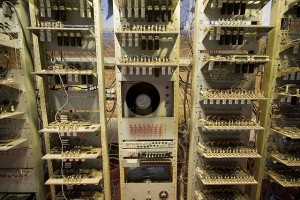 June 21, 1948
June 21, 1948
The first program on the world’s first stored-program computer, the Manchester Small-Scale Experimental Machine (SSEM) is run. This first program was designed to test the computer’s reliability and ran for 52 minutes performing 3.5 million operations.
SEAC Machine Dedicated
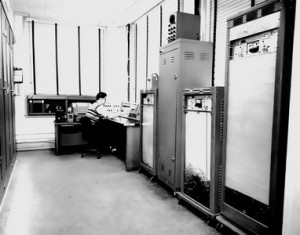 June 20, 1950
June 20, 1950
The National Bureau of Standards dedicated the SEAC (Standards Eastern Automatic Computer) in Washington. The SEAC was the first computer to use all-diode logic, a technology more reliable than vacuum tubes, and was the first stored-program computer completed in the United States. Magnetic tape in the external storage units stored programming information, coded subroutines, numerical data, and output.
IBM is Incorporated as CTR
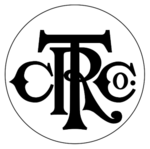
The Computing – Tabulating – Recording Co. (C-T-R), a consolidation of the Computing Scale Co. of America, The Tabulating Machine Co., and The International Time Recording Co. is incorporated in New York. In 1924, C-T-R adopted the name International Business Machines, better known as IBM.
Charles Babbage Unveils Difference Engine
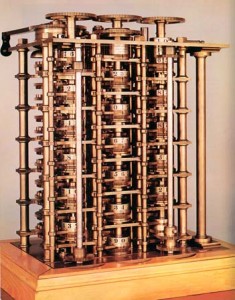
In a paper to the Royal Astronomical Society, Charles Babbage unveils his design for a machine he called the Difference Engine, the first example of a mechanical computing machine. The British government funded the building of a Difference Engine, which Babbage never actually completed. However, Babbage’s design for the Difference Engine and his later Analytical Engine spurred future designs of working mechanical computers. In 1991 a working Difference Engine was constructed using Babbage’s plans, proving that his designs would have worked.
